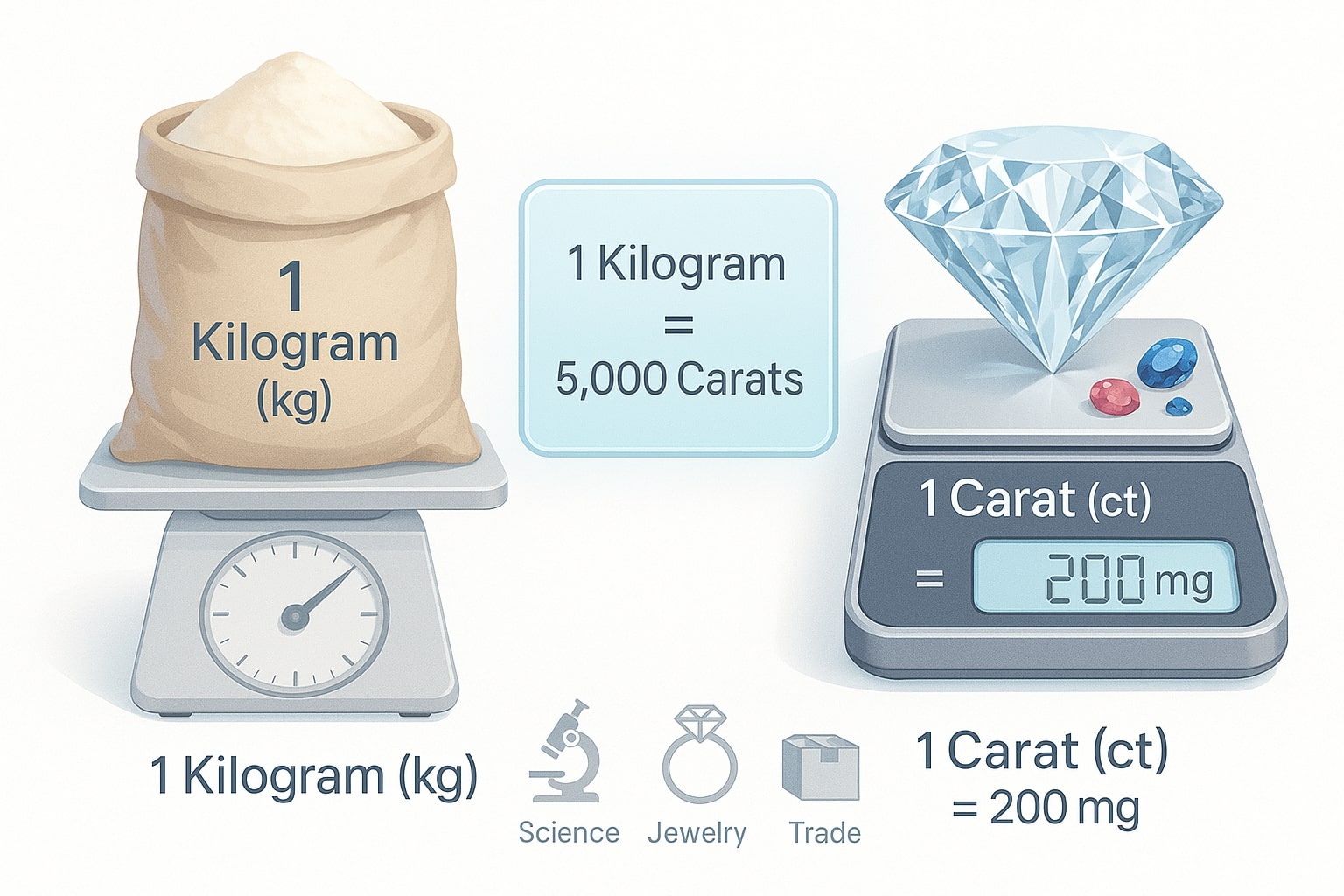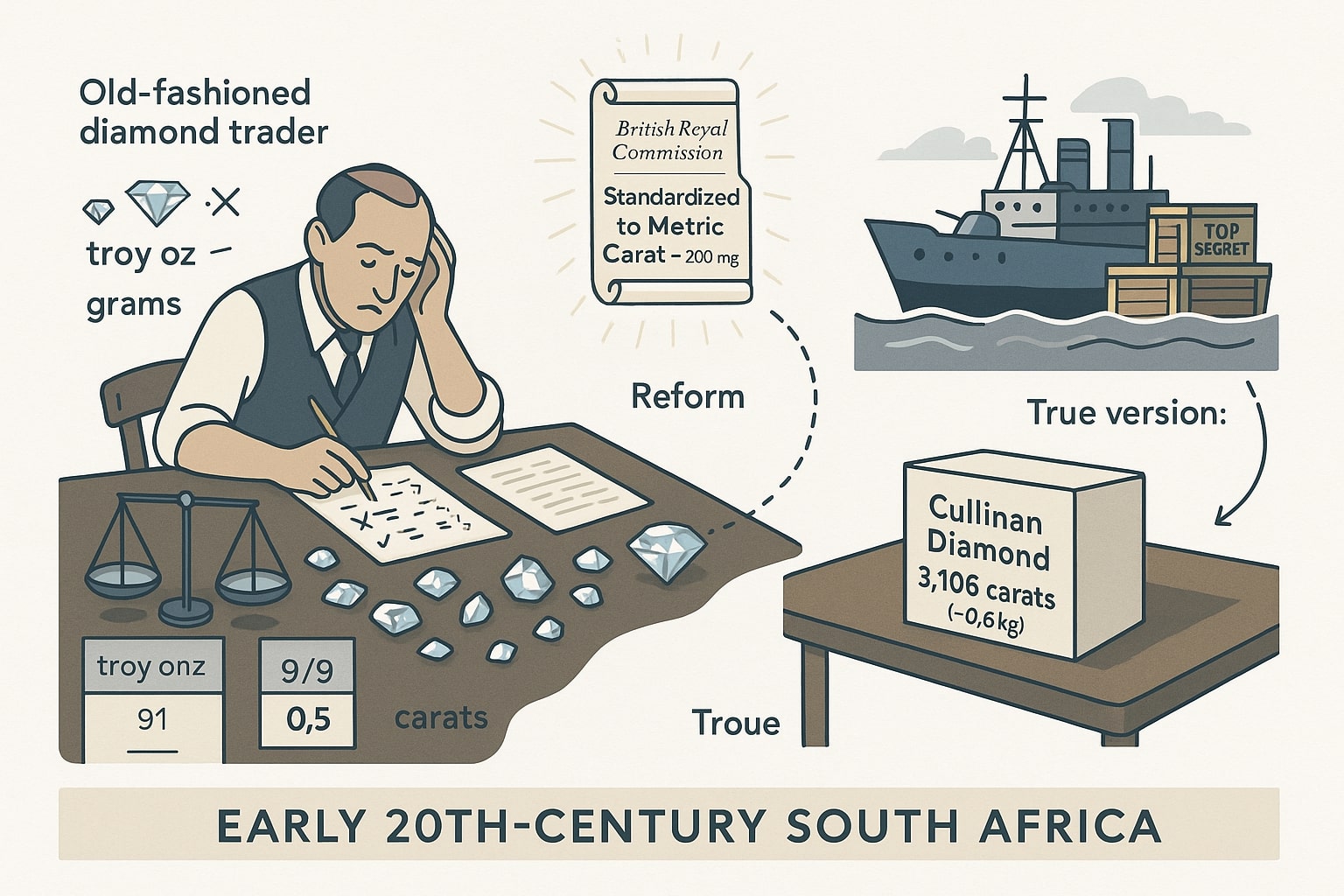kg to st - How to convert kilograms to carats?
Are you looking for a quick and accurate way to convert kg to ct? The kg to ct converter helps bridge the gap between two very different ways of measuring weight.
Kilogram and carat:
A kilogram (kg) is a large, standard unit used for everyday items—think of flour or luggage. In contrast, a carat is much more refined, used to measure the tiny yet valuable mass of gemstones.
On the other hand, a carat (ct) is all about precision. Primarily used in gemology, one carat equals 200 milligrams, making it perfect for weighing diamonds, sapphires, and other precious stones. Since 1 kilogram equals 5,000 carats, converting between these two units isn't just about numbers—it’s about scale and context. The converter simplifies this process, ensuring that scientists, jewelers, and traders can move seamlessly between bulk measurement and fine detail.

To convert kilograms to carats, use this simple formula:
Carat (ct) = Kilogram (kg) × 5,000
This formula is essential in industries like gemology, where even a small miscalculation can significantly affect the value of a gemstone.
For example:
0.2 kg × 5,000 = 1,000 carats
1.5 kg × 5,000 = 7,500 carats
Did you know?
-
The term carat comes from the carob seed, once believed to have a consistent weight, making it perfect for ancient gem traders.
-
The metric carat we use today (equal to 200 milligrams) was officially adopted in 1907 to standardize gem weight worldwide.
-
1 kilogram equals 5,000 carats, a fact crucial for jewelers dealing in bulk precious stones or raw gem shipments.
-
While kilograms measure apples or luggage, carats are reserved for high-value items—mainly diamonds, where even 0.01 ct matters.
-
In gem auctions, a difference of just 0.1 carat can mean thousands of dollars in value!
-
Some large diamonds, like the Cullinan, weigh over 3,000 carats—that’s more than 0.6 kg of pure gem.
Real Story – Diamonds, Weights, and Deception
In the early 20th century, diamond traders in South Africa manipulated gemstone weights by switching between troy ounces, grams, and carats, leading to confusion and financial disputes. This inconsistency prompted the British Royal Commission to standardize gemstone weight to metric carat in the Commonwealth.
One iconic event involved a rare Cullinan diamond, weighing over 3,000 carats (~0.6 kg), which required secure transport to London. The decoy story and armored ship escort were later revealed to be a ruse—the real gem was mailed in a plain box to ensure safe delivery.

Conclusion
Converting kilograms to carats isn’t just math—it’s a link between everyday weight and the precision of gemology. Whether you're in science, trade, or simply curious, understanding this conversion helps you appreciate how tiny units can carry immense value, both in numbers and in meaning.

